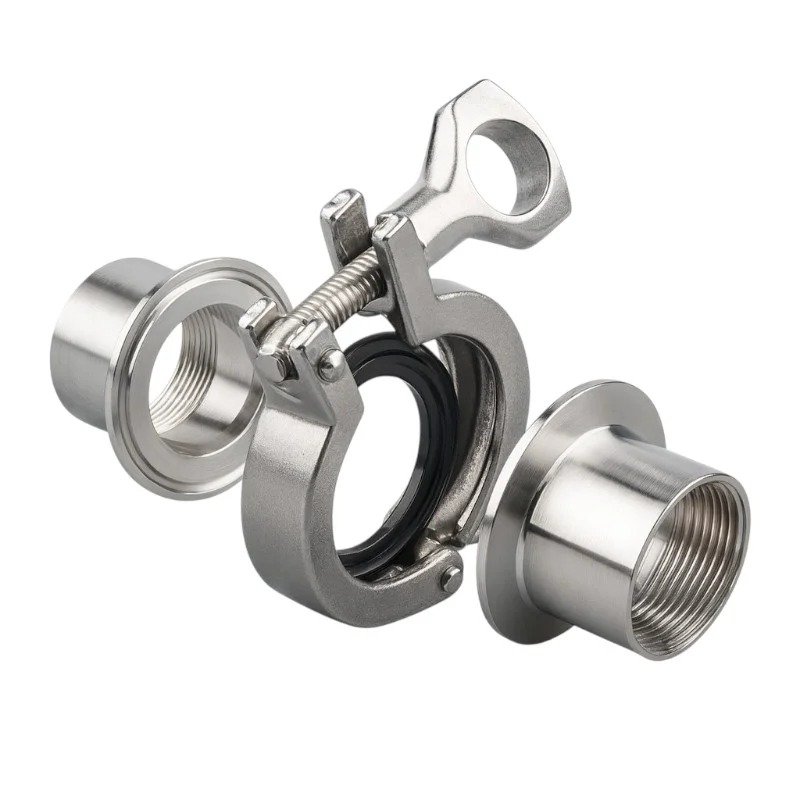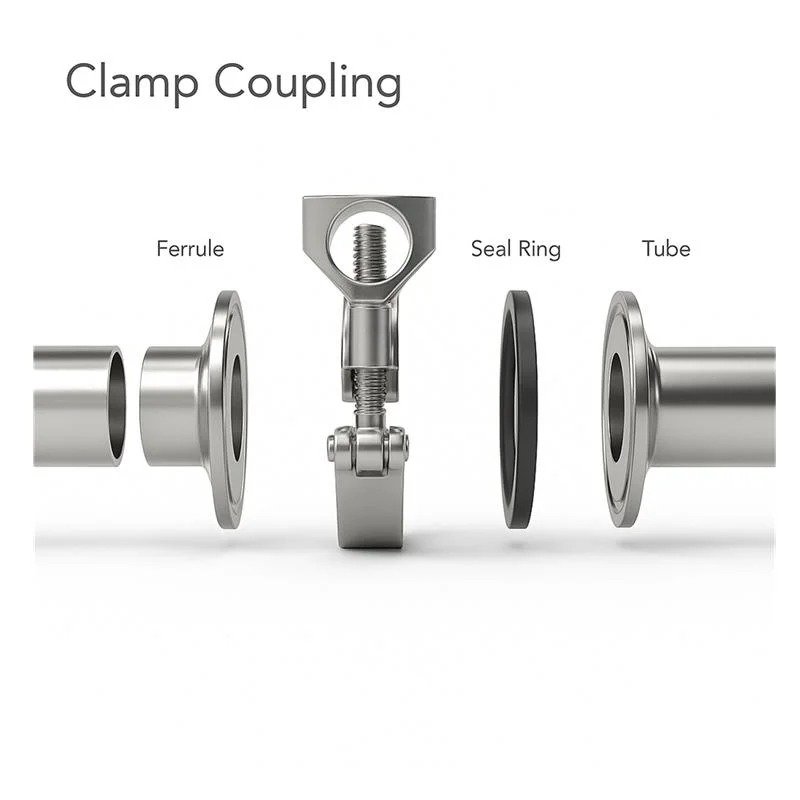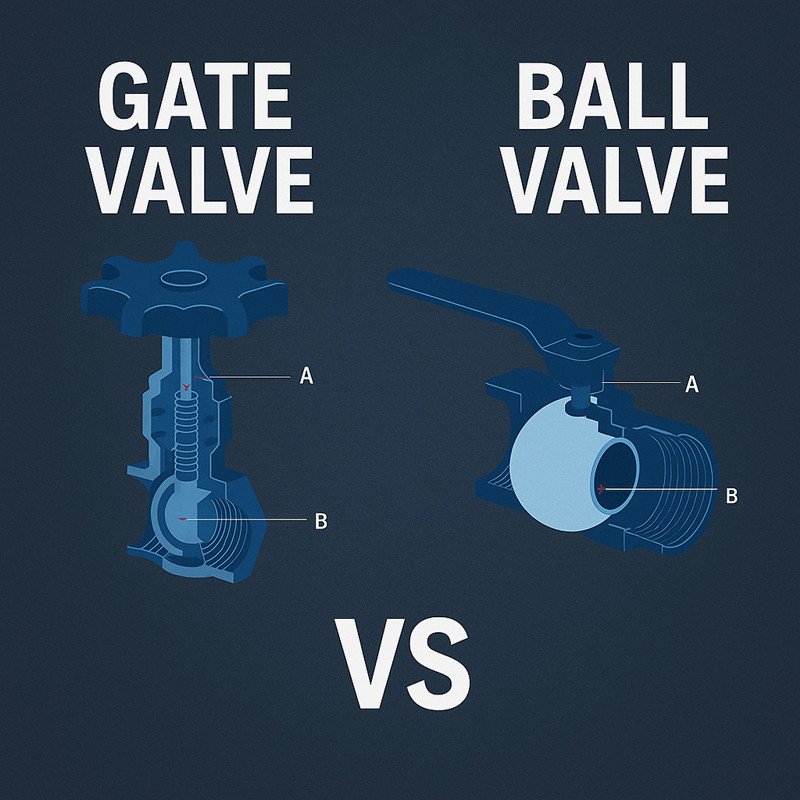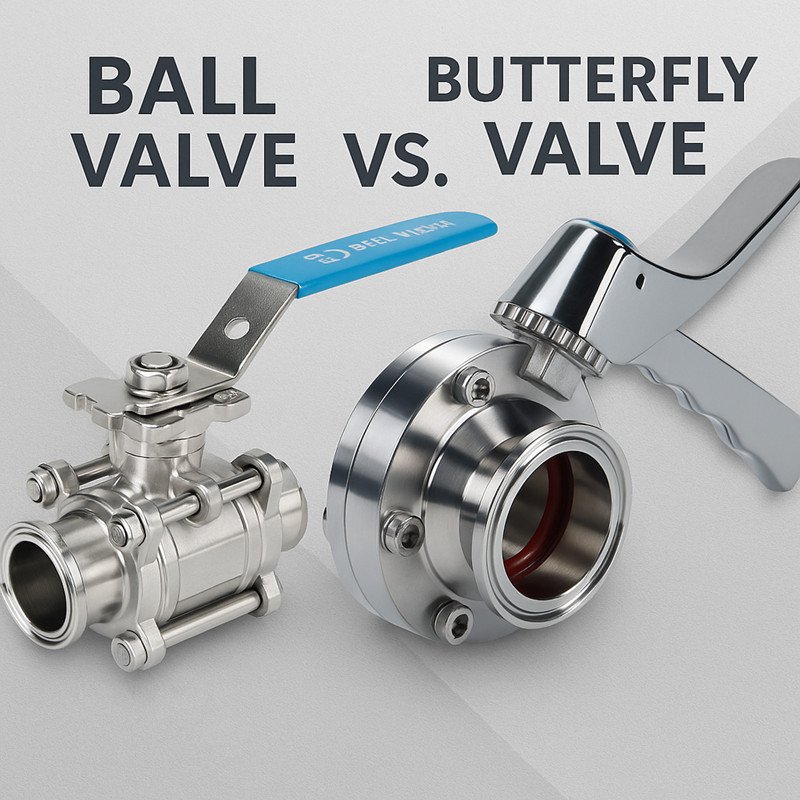
Needle valves may look small, but choosing the wrong type could lead to major system failures.
A needle valve is a precision flow control valve1 used to finely regulate the flow rate of fluids or gases through a system, especially in low-flow and high-pressure applications2.
They’re small but mighty. Let’s break down what they are, how they work, and how to pick the right one for your fluid control system.
Understanding Needle Valves?
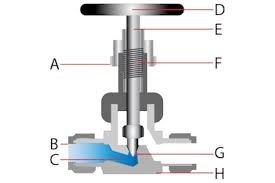
Needle valves are often overlooked, yet they’re crucial for precision control.
A needle valve controls flow by moving a long, tapered needle in and out of a matching seat, making it ideal for fine flow regulation.
Needle valves are used where small, gradual adjustments3 are necessary. Unlike other valve types, they’re not built for quick open/close actions. Their structure allows operators to control flow with exceptional accuracy4.
Basic Structure and Operation
A typical needle valve consists of:
- Body: Usually stainless steel, brass, or PVC
- Stem: A long, narrow needle that controls flow
- Seat: Tightly machined for a snug needle fit
- Handle or actuator: Manual or automated
The user turns the handle, moving the needle vertically. As the needle tip approaches the seat, it restricts flow. Fully seated, the valve shuts off completely. Backing out the needle allows flow to resume in small, measurable amounts.
This design is perfect for calibration systems, sample lines, fuel mixing, or laboratory testing—where precise control matters more than quick shutoff.
Materials Matter
| Component | Common Materials | Considerations |
|---|---|---|
| Valve Body | Stainless steel, Brass | Corrosion resistance, pressure rating |
| Needle/Stem | Stainless steel | Wear resistance, fine threading |
| Seals | PTFE, Viton | Chemical compatibility, temperature range |
What are the types of needle valves?

Not all needle valves are created equal—different designs serve different systems.
Needle valves come in straight, angle, multiport, and even automated versions, each built for unique installation and operation needs.
Let’s explore the common types and where they fit best.
Straight Needle Valves
This is the most common type. The inlet and outlet ports are in a straight line. Ideal for inline flow control.
Angle Needle Valves
Ports are arranged at a 90-degree angle. These are used where space is tight, or directional changes are needed in piping.
Multiport Needle Valves
Allow for multiple connections to a single flow path. Useful in sampling lines or test equipment.
Automated Needle Valves
Controlled by electric, pneumatic, or hydraulic actuators. These are common in industrial systems where remote or precise control is essential.
| Valve Type | Use Case | Benefits |
|---|---|---|
| Straight | Inline flow regulation | Simple design, easy to install |
| Angle | Compact spaces, directional changes | Space-saving, reduced fittings |
| Multiport | Sample or test setups | Flexible, connects multiple lines |
| Automated | Industrial automation | Hands-free, consistent control |
| Miniature/High-pressure | Labs or extreme environments | Compact or durable under pressure |
How to choose the right needle valve?
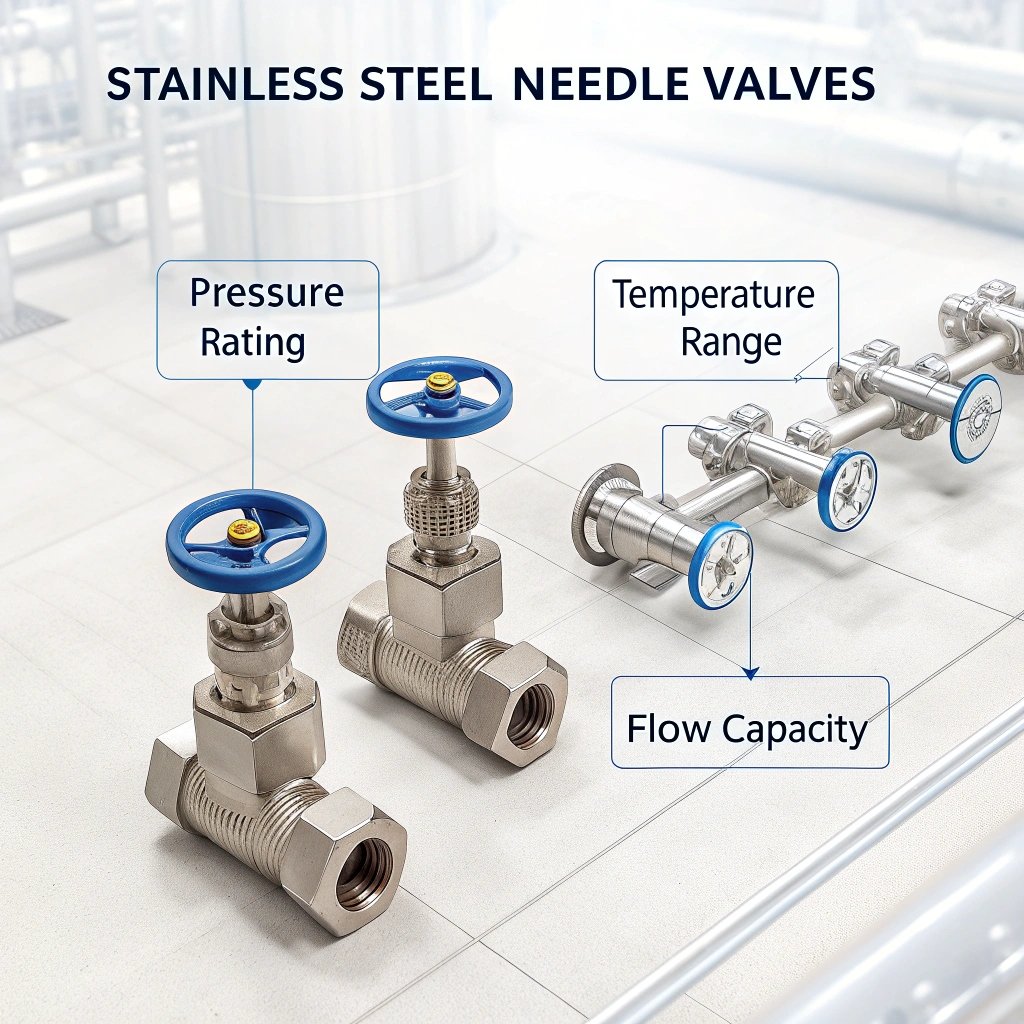
Choosing the wrong valve can cost you—literally.
Select a needle valve based on pressure, temperature, media compatibility, required flow rate, and material standards.
Every system is different. Start with your system’s specifications:
Key Selection Factors
- Pressure rating: Choose a valve that exceeds system pressure.
- Temperature range: Consider both fluid and ambient temperatures.
- Flow rate: Needle valves are for low flow rates; oversizing may reduce accuracy.
- Media type: Is your fluid corrosive? Choose stainless steel or compatible seals.
- Port size and thread type: Must match the pipe or tube fittings.
Compatibility Table
| Factor | Recommendation |
|---|---|
| High-pressure | Use forged stainless steel body |
| Corrosive media | PTFE seals, 316 SS body |
| Tight spaces | Angle needle valve |
| Remote control | Electric or pneumatic actuator |
System compatibility is more than specs. Check certifications (e.g., ISO, CE), and make sure your valve manufacturer offers testing reports.
Where are needle valves used?

You’ll find needle valves in critical places—when failure is not an option.
They’re used in oil & gas, chemical processing, water treatment, and labs where fine flow adjustments are critical.
Real-World Use Cases
Oil and Gas
Used in metering lines, sampling systems, and chemical injection. Needle valves help prevent overflows, leaks, or misreads in measurement systems.
Chemical Processing
They control flow of aggressive chemicals in batch dosing or testing. With the right materials, they handle acids, bases, or solvents.
Water Treatment
Used in flow control for chemical dosing or monitoring systems. They offer precision without the risk of quick shutoffs that might cause water hammer.
| Industry | Application | Why Needle Valves? |
|---|---|---|
| Oil & Gas | Sampling, injection | Leak-proof, precise, high pressure |
| Chemical Processing | Lab dosing, calibration | Chemical resistance, accuracy |
| Water Treatment | Flow monitoring, chemical addition | Smooth control, minimal turbulence |
In these industries, precision isn’t just nice—it’s mandatory. And that’s where needle valves outperform simpler valves.
How do needle valves compare to other valves?

Looks can deceive—functionality is everything.
Needle valves offer unmatched control compared to ball or globe valves, though they’re not designed for fast flow or quick shutoff.
Let’s look at how needle valves stack up against other common types:
Comparison Table
| Valve Type | Flow Control | Shutoff Speed | Durability | Ideal Use Case |
|---|---|---|---|---|
| Needle Valve | Very Precise | Slow | High | Low-flow systems, sampling |
| Ball Valve | On/Off only | Instant | Very High | Quick shutoff, isolation |
| Globe Valve | Good | Moderate | Medium | Throttling applications |
Ball valves are best for isolation. Globe valves offer decent control. But only needle valves provide ultra-fine flow adjustment.
So, if you’re tuning a test line, calibrating instruments, or working with expensive or hazardous media, needle valves are your best bet.
How to maintain and troubleshoot needle valves?

A sticky valve can ruin an entire process.
Regular inspection, proper torque, and media-compatible materials ensure long needle valve life and reliable performance.
Best Practices
- Inspect regularly: Look for leaks, corrosion, and worn-out threads.
- Avoid over-torquing: Excess pressure on the needle can damage the seat.
- Use proper tools: Especially when installing or adjusting automated models.
Common Issues
| Symptom | Cause | Solution |
|---|---|---|
| Hard to operate | Debris or corrosion | Flush system, use filters |
| Leaking at stem | Seal wear | Replace packing or O-rings |
| Inconsistent flow | Worn needle or seat | Replace valve or damaged parts |
Preventive maintenance saves cost and downtime. Especially in high-pressure or high-purity systems, it’s better to over-maintain than risk failure.
What’s next for needle valve technology?
Yes, even needle valves are getting smarter.
Modern needle valves integrate with sensors, actuators, and IoT systems for real-time control and diagnostics.
Innovations to Watch
- Smart actuators: Allow remote control via app or control room.
- IoT integration: Real-time data helps predict failures.
- Compact designs: For tighter and cleaner installations.
- Additive manufacturing: 3D-printed internals for better precision.
As automation spreads across industries, needle valves are being adapted for Industry 4.0. You’ll start seeing them in self-optimizing systems, paired with flow meters and machine learning tools.
These upgrades won’t change the core purpose—but they will make them easier to use and harder to break.
Conclusion
Needle valves are essential for precise, low-flow control across industries. Choosing the right type and maintaining it well ensures safety and efficiency in your fluid systems.
-
Discover the various types of flow control valves to enhance your knowledge and application in fluid systems. This resource will provide valuable insights. ↩
-
Explore the significance of low-flow and high-pressure applications to understand their impact on system design and efficiency. ↩
-
Learn why precision in flow control is crucial and how it impacts system performance. ↩
-
Discover the mechanisms behind needle valves that enable precise flow control, enhancing operational efficiency. ↩



